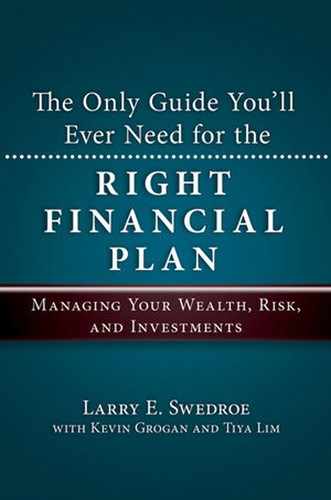Each of the prior eight books I have written reflects what I have learned in my almost forty years of managing financial risks for major corporations and advising individuals, institutions, and corporations on the management of financial risks.
Included among my books is the trilogy of "Only Guides." The first focuses on equities, the second on bonds, and the third on alternative investments. Each presents what one might call the "science" of investing: evidence based on peer-reviewed academic studies. The "Only Guides" explore the best investment vehicles to use, the risks and rewards of major asset classes, specific types of investments, and the benefits of a globally diversified portfolio. The books even present model portfolios, but these are meant as starting points only. Each investor has a unique ability, willingness, and need to take risk.
What investors need today is a book offering more specific investment advice, one focusing on the "art" of investing and guiding investors to adapt a winning investment strategy to their own situation. That is what this book is all about.
This "Only Guide" addresses a wide range of investment issues. For example, who should consider owning more small-cap stocks, value stocks, and emerging market stocks, and who should consider owning less of them? It also addresses the often-overlooked subjects of asset location (as opposed to allocation), withdrawal strategies in retirement, and when and how to take Social Security benefits. Most importantly, it will help you integrate other financial issues into an overall financial plan. Having a well-thought-out investment plan is a necessary condition for success, not a sufficient one. The sufficient condition is integrating the investment plan into a well-thought-out estate, tax, and risk management plan. As we demonstrate in Part IV, even the best investment plans can fail if these other issues are not adequately addressed.
The goal of this book is to help both investors and professional advisers make better, more informed decisions in order to practice the winning investment strategy. Thus, the book is designed to help you understand the fundamental concepts of asset allocation, asset location, and other investing and general financial planning concepts. After reading this book, you will have learned how to:
design an investment policy statement (IPS) and asset allocation plan, one most appropriate to your unique situation
locate assets in the most tax-efficient manner
maintain the portfolio's risk profile in the most efficient manner
provide effective tax management
integrate risk management and estate planning issues into the plan
While written to be accessible, this is not a "dummies" book. The assumption is that you know some basics about stocks and bonds.
This book can be used in two ways: read cover to cover or searched for topics of interest, providing quick access to information to answer specific questions that may arise and as circumstances change. Thus, it can serve as a reference manual. Most topics are broad based. You will find a brief discussion of a subject and perhaps a reference to an appendix or one of my other books containing a more detailed discussion of the subject.
Because investing is more art than science, this guide is not meant to provide hard-and-fast rules. While a physicist can measure the speed of light to the fourth decimal place with minimal estimation error, even the most fervent finance professor knows that such precision is impossible in investment theory. Investors and advisers alike must accept that they will never know, ex-ante, the optimal allocation to international investments or how much an investor's portfolio should tilt toward value stocks or small-cap stocks. In most cases, all they can be sure of is that they are in the ballpark. This book is a tool to help you make prudent decisions, remembering prudence is determined not by the outcome, but by the process. Therefore, this book:
raises questions leading you to the best answer given a particular situation
helps identify issues that should be considered
gives direction so you can best use your own judgment and apply it to each unique situation
As a final resource, the book contains an extensive glossary of terms.
Larry Swedroe
